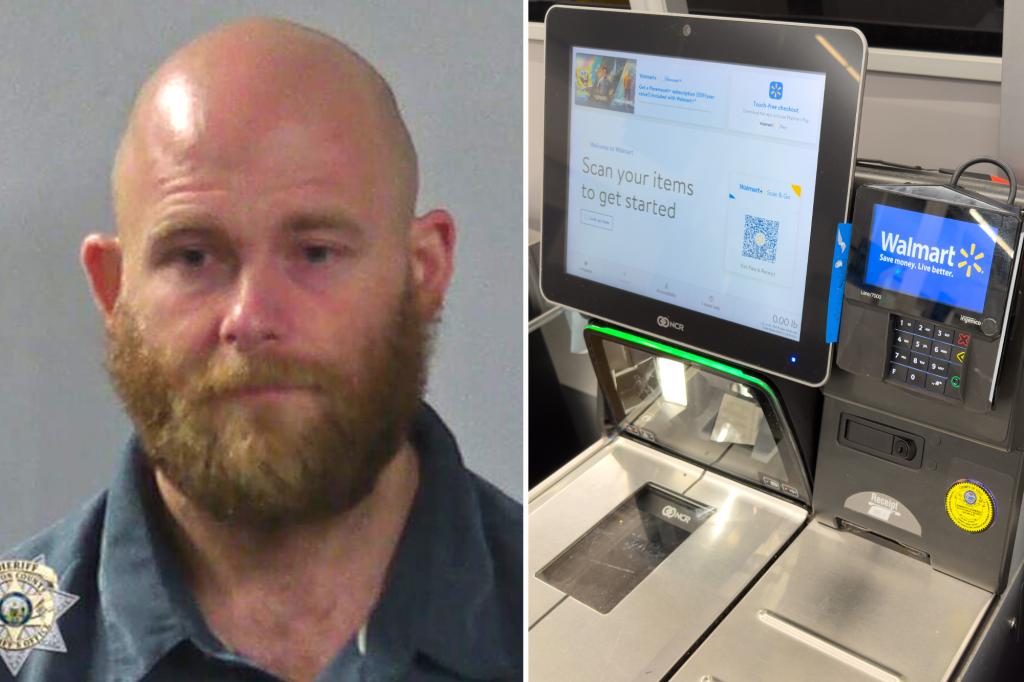The story revolves around Dylan Rockwell, a 32-year-old Idaho resident, who allegedly employed a cunning yet ultimately flawed scheme to steal from a Walmart store. Rockwell’s ingenuity lay in crafting a homemade ring inscribed with a barcode, which he used to deceive the self-checkout system. His method involved waving the ring over the scanner, effectively substituting the barcode of a low-priced item for that of a significantly more expensive one. His downfall came when he attempted to purchase a $300 grill for the price of a can of tomato soup, a discrepancy that triggered suspicion and led to his apprehension by the Caldwell Police Department.
The incident unfolded on February 2nd when Walmart employees reported a theft in progress. Responding officers traced Rockwell back to his residence, approximately 25 miles from Boise, the state capital. Upon questioning, Rockwell allegedly confessed to employing the barcode-ring scam on multiple occasions at the same Walmart. The police recovered the stolen grill from his home. Rockwell’s innovative approach to theft, while initially successful, ultimately landed him in legal trouble, facing a felony burglary charge. His attempt to exploit a perceived vulnerability in the self-checkout system highlights the ongoing challenges retailers face in balancing customer convenience with security measures.
The deceptive simplicity of Rockwell’s method speaks to the ease with which self-checkout systems can be manipulated, albeit temporarily. By using a readily available item like a can of soup, whose barcode is easily replicated, Rockwell managed to bypass the intended pricing mechanism. His choice of a commonly purchased, inexpensive item likely helped him blend in with regular shoppers, further obfuscating his illicit activities. This case underscores the vulnerability of self-checkout lanes to various forms of fraud, particularly when unattended or inadequately monitored. While the technology offers convenience, it also presents opportunities for those seeking to exploit its weaknesses.
The Caldwell Police Department’s response to the incident reflects both a sense of amusement at Rockwell’s creativity and a firm stance against his criminal activity. Chief Rex Ingram’s statement, acknowledging Rockwell’s ingenuity while simultaneously condemning his actions, captures the paradoxical nature of the situation. The phrase “county soup for dinner” alludes to the potential consequences of Rockwell’s actions, suggesting jail time as a likely outcome. The police department’s use of social media to share the story served as a public reminder of the potential consequences of retail theft, regardless of the method employed.
The case of Dylan Rockwell raises broader questions about the evolving landscape of retail security in an increasingly automated world. As self-checkout systems become more prevalent, retailers must grapple with the inherent risks they pose. This incident highlights the need for enhanced security measures, such as improved surveillance, more sophisticated barcode scanning technology, and potentially even staff intervention at self-checkout lanes. The balance between customer convenience and loss prevention remains a delicate one, and this case serves as a reminder of the constant need for adaptation and innovation in retail security practices.
Beyond the immediate implications for Walmart and its security protocols, this incident resonates with a broader social commentary on economic hardship and resourcefulness, albeit misdirected. While the details of Rockwell’s motivations remain unknown, the fact that he resorted to stealing a grill raises questions about his financial circumstances. While in no way condoning his actions, the story subtly touches upon the pressures individuals face in challenging economic times. Rockwell’s ingenuity, however misguided, could be interpreted as a desperate attempt to acquire something he couldn’t afford through legitimate means. This interpretation, however, does not excuse the criminal act but rather adds another layer of complexity to the narrative.

